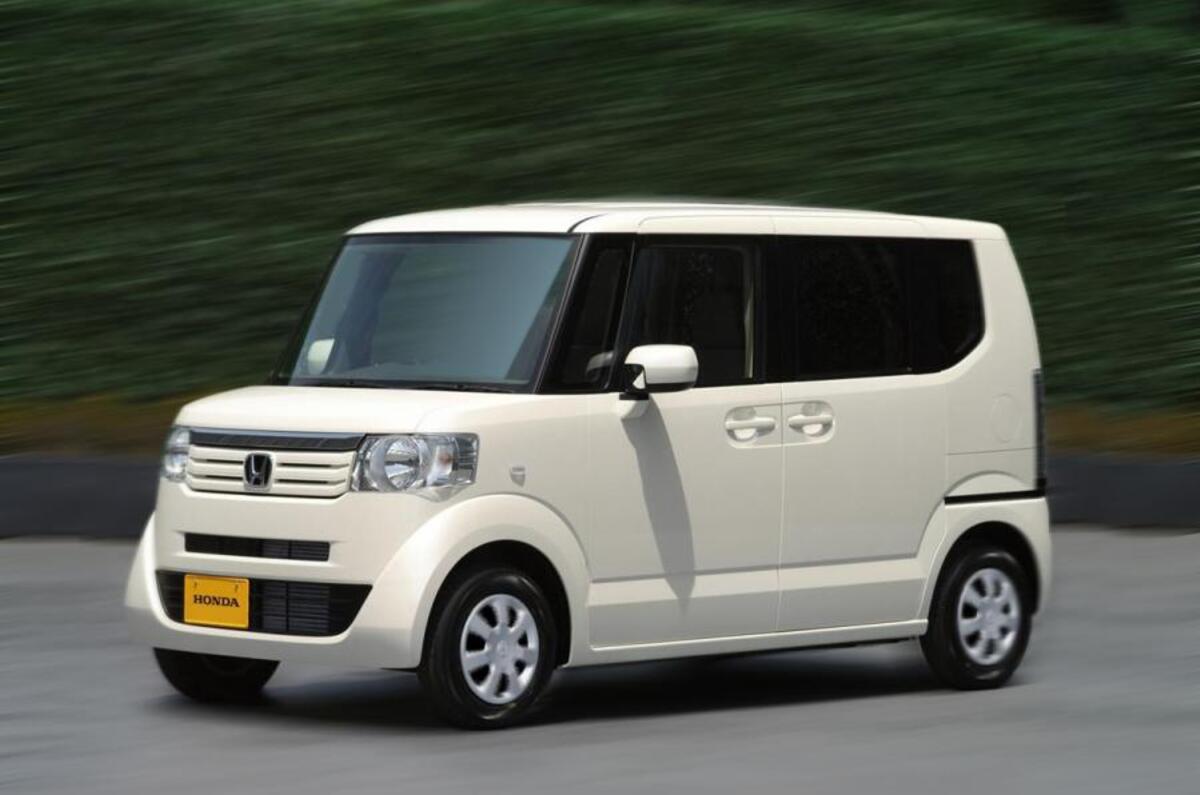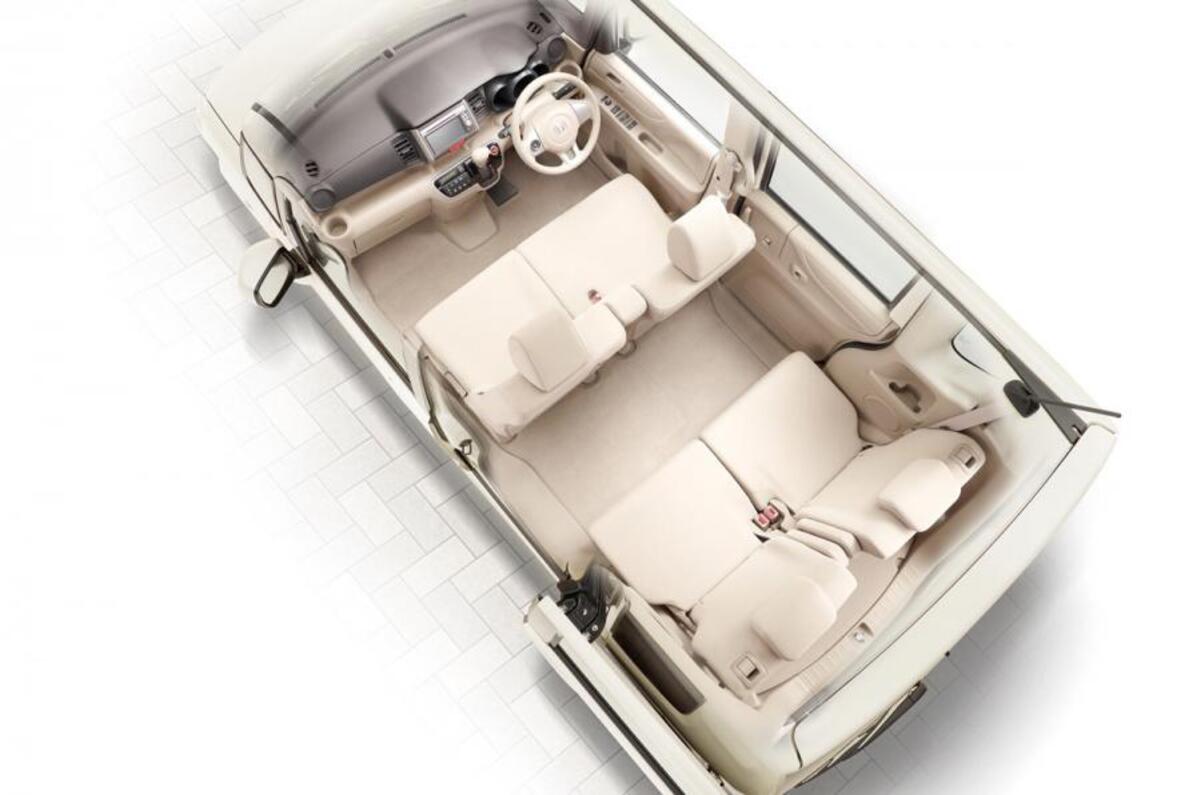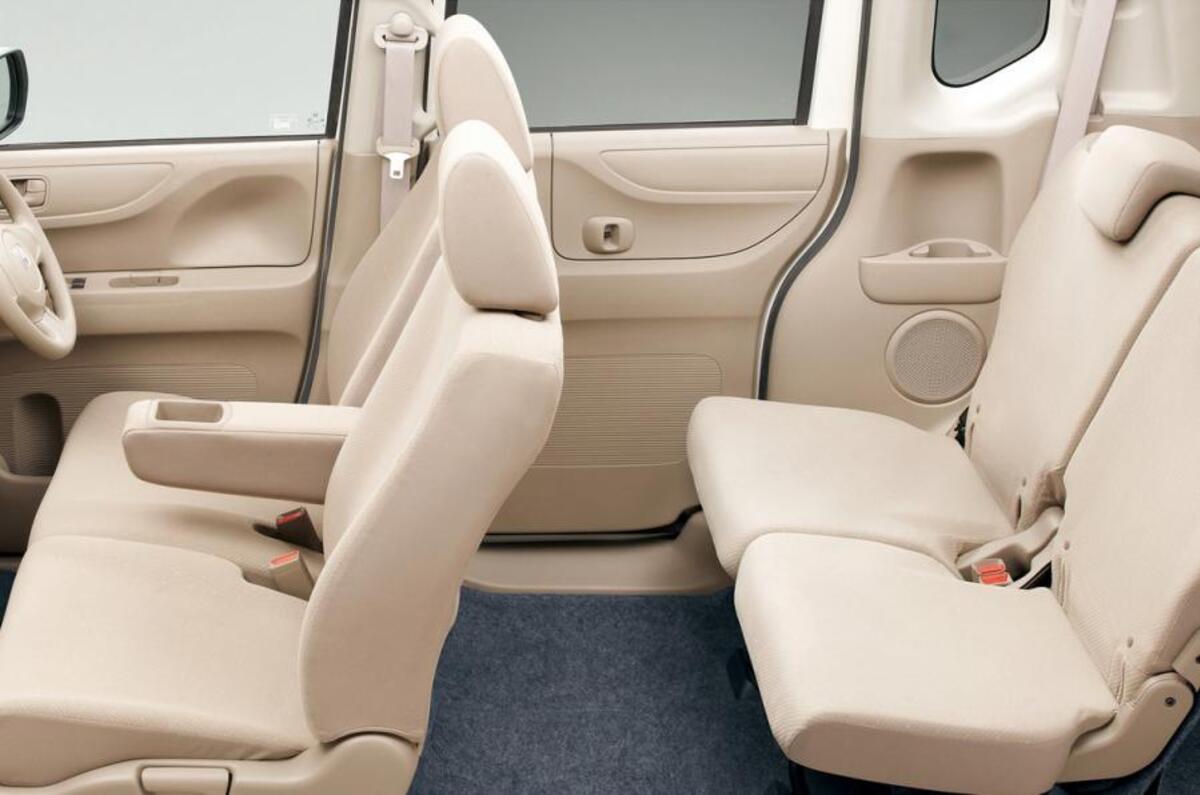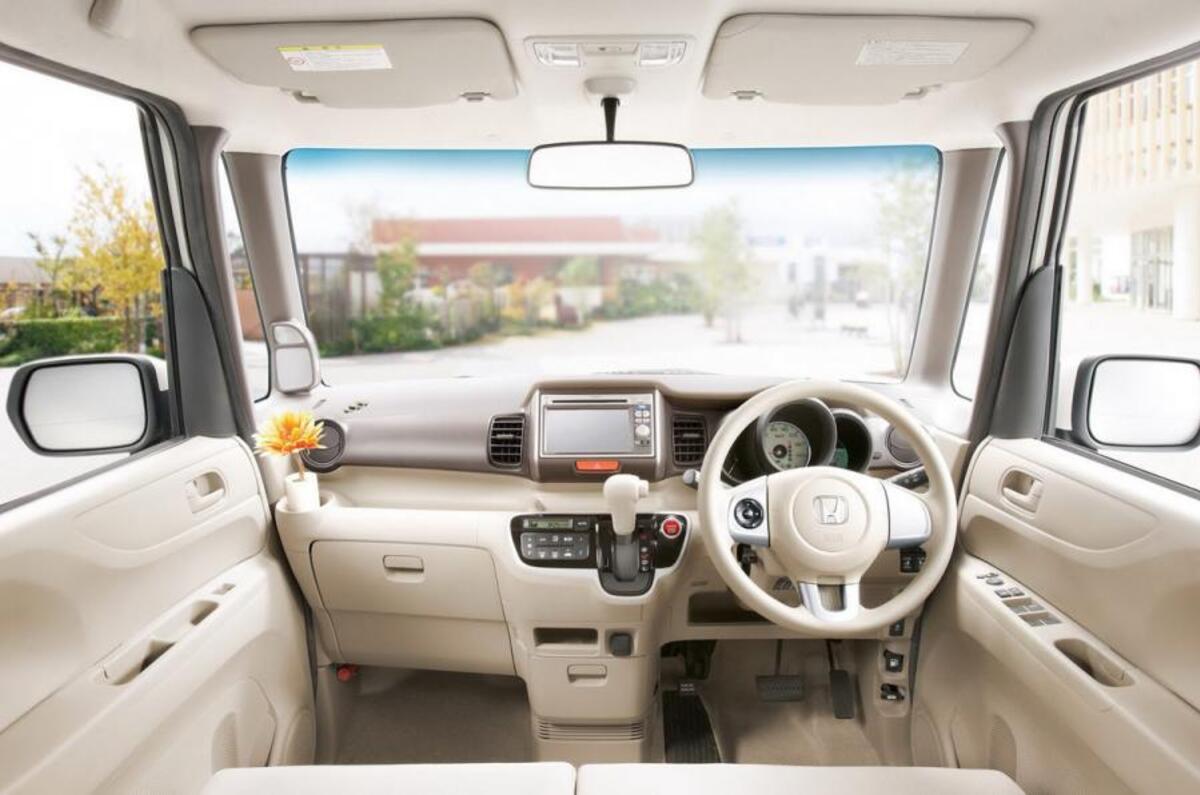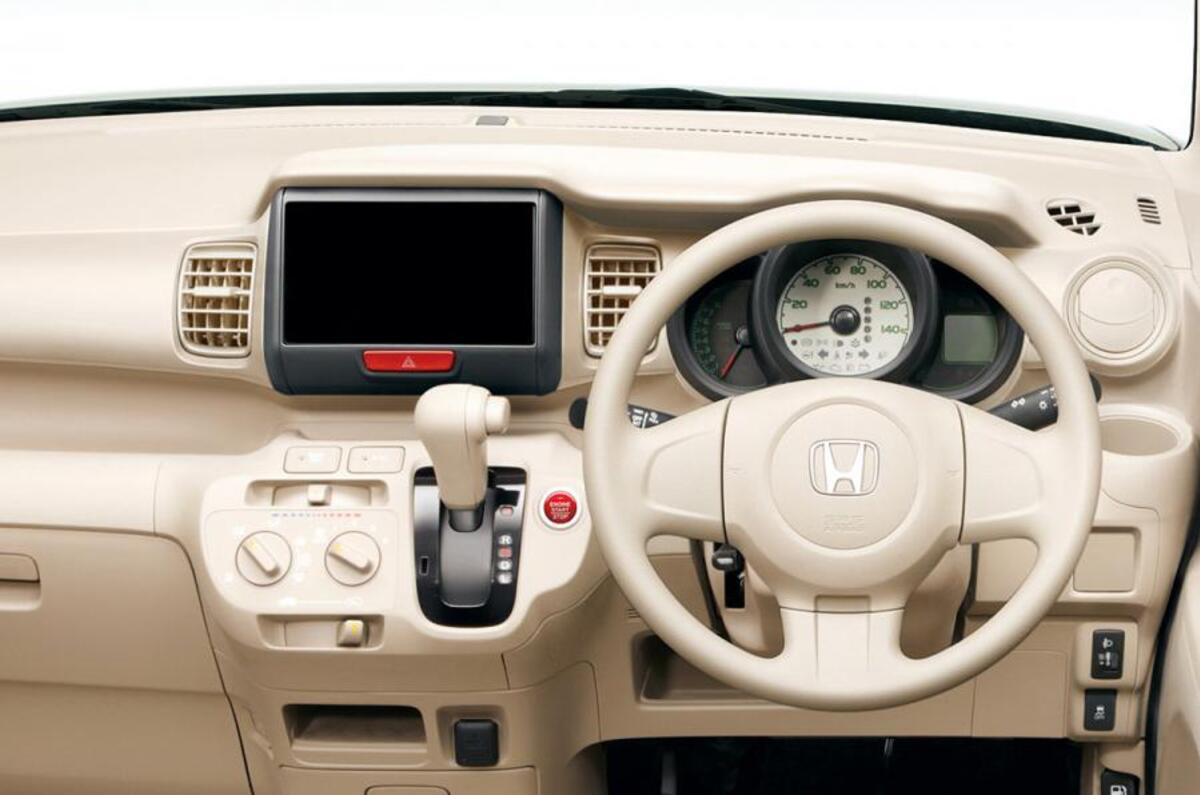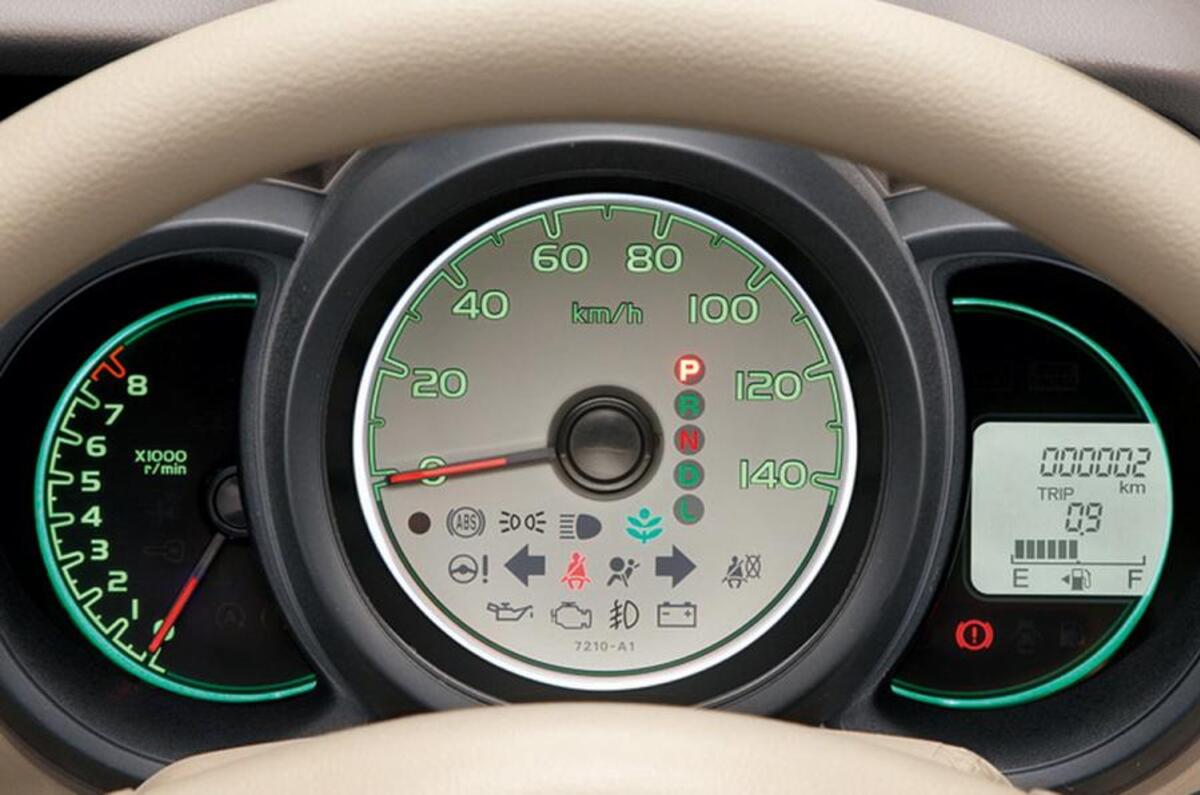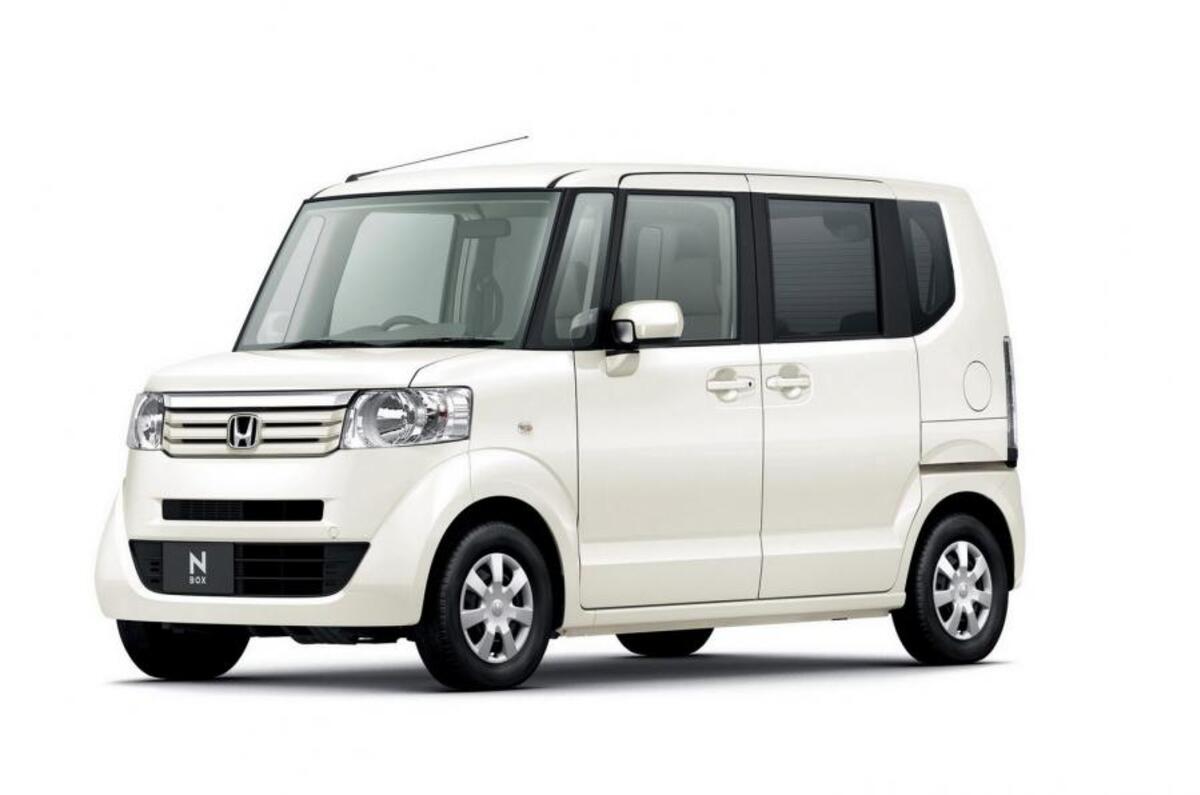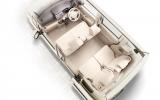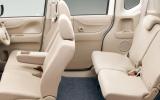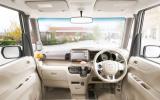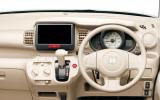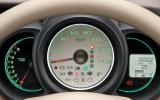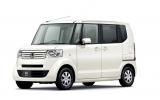Japan’s best selling kei car. Around one-third of the cars sold in Japan are kei cars, size restricted vehicles that attract favourable toll and tax breaks in the largest cities.
The main restrictions are in length (3.4m), width (1.48m) and height (2m). Engine size is also restricted to a maximum of 660cc and 63bhp.
Around 20,000 Honda N Boxes are sold each month. The car is also noteworthy for having been commissioned by ambitious Honda boss Takanobu Ito, and its success is credited with forming part of the bedrock that is allowing the company’s more forward-thinking plans now.
It sits on a bespoke platform, the investment in which goes some way to explaining Honda’s ambitious plans to spin-off more kei car products in the near future, including a roadster successor to the iconic but slow-selling Honda Beat.
The N Box is available in front and four-wheel drive (adding 60kg and seems unnecessary given the car's urban credentials), with three trim levels on offer. We tested a mid-spec GL version with a CVT box.
As well as the Honda N Box, buyers can choose the Honda N Box Plus, which is built for additional practicality, and has features including a rear ramp, and the Honda N Box Custom, which allows buyers to customise the colours and trims of their vehicles.


